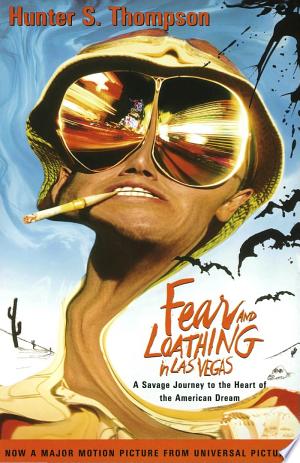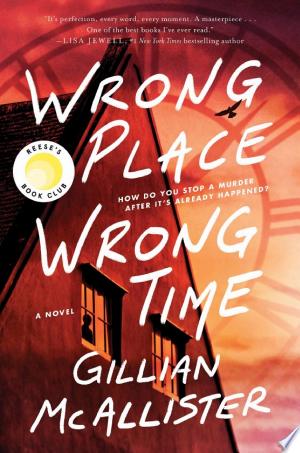Estimated read time: 9 min read
One Sentence Summary
A drug-fueled journey through the madness and absurdity of 1970s Las Vegas.
Table of Contents
- Unraveling the Chaos: An In-Depth Summary of Fear and Loathing in Las Vegas
- Plot Overview
- Main Characters
- Setting of "Fear and Loathing in Las Vegas"
- Themes and Symbols in "Fear and Loathing in Las Vegas"
- Writing Style of "Fear and Loathing in Las Vegas"
- Analysis and Interpretation
- Legacy and Influence
- Conclusion
Unraveling the Chaos: An In-Depth Summary of Fear and Loathing in Las Vegas
Welcome to your one-stop guide on "Fear and Loathing in Las Vegas" summary. This blog post is perfect for those who are looking for a concise, yet insightful rundown of Hunter S. Thompson's timeless classic. In essence, "Fear and Loathing in Las Vegas" recounts the psychedelic escapades of Raoul Duke (Thompson’s alter ego) and his attorney as they embark on a mind-bending journey into Las Vegas — a city emblematic of both the American Dream and its decadence.
This isn't just another book review or literary analysis; we're giving you an easy-to-grasp breakdown that will satiate your curiosity about this iconic work without spoiling your reading experience. So whether you're cramming for a literature exam, trying to impress at book club, or simply want to know what all the fuss is about — stay tuned!
Plot Overview
"Fear and Loathing in Las Vegas" is a wild ride penned by Hunter S. Thompson, featuring exaggerated depictions of drug use and an exploration of the American Dream.
- The story kicks off with protagonist Raoul Duke driving toward Las Vegas alongside his attorney, Dr. Gonzo.
- Their trunk is packed with a wide assortment of drugs - their fuel for the journey ahead.
Key Events
- The Mint 400: This infamous desert race marks their first stop where they fail to report on it due to heavy intoxication.
- American Dream Quest: They abandon their journalistic duties entirely and embark on a quest to find the elusive 'American Dream'.
- Wild Antics & Hallucinations: As they venture deeper into Sin City, their escapades become more outrageous under drug-induced hallucinations.
| Event | Description |
|---|---|
| Hotel check-in | Under heavy influence they register at two hotels almost simultaneously causing confusion later on |
| Circus-casino incident | A nightmarish experience during which Duke experiences vivid hallucinations |
Finally, amidst all chaos and wreckage left behind in Vegas, they return home having failed in their original mission but having undergone surreal adventures along the way.
Note: The narrative is nonlinear and often jumps between reality and hallucination due to rampant drug usage.
Main Characters
Raoul Duke (Hunter S. Thompson): The narrator and protagonist of the story, Raoul Duke is a journalist sent to Las Vegas to cover the Mint 400 motorcycle race.
- Occupation: Journalist
- Personality Traits: Fearless, rebellious, drug-addicted
Dr. Gonzo (Oscar Zeta Acosta): Duke's attorney and fellow adventurer on their psychedelic trip through Las Vegas.
- Occupation: Attorney
- Personality Traits: Unpredictable, volatile, also heavily into drugs
| Character | Occupation | Personality Traits |
|---|---|---|
| Raoul Duke | Journalist | Fearless, rebellious |
| Dr. Gonzo | Attorney | Unpredictable, volatile |
- Raoul Duke: A maverick journalist with a fondness for substances that blur reality.
- Dr.Gonzo: An almost uncontrollable lawyer who accompanies Duke on his escapade.
Remember these are fictional representations of real people - Hunter S.Thompson himself as Raoul Duke and Oscar Zeta Acosta as Dr.Gonzo!
Setting of "Fear and Loathing in Las Vegas"
"Fear and Loathing in Las Vegas" is a story that unfolds primarily across two main settings:
- Las Vegas: The city serves as the primary backdrop for the book's wild adventures.
- Casinos: Many scenes take place amidst the glitz, glamour, and excess of Sin City’s famous casinos.
- Hotel Rooms: A significant portion of the narrative happens within various hotel rooms where frantic debauchery unfolds.
- The Mojave Desert: This vast expanse surrounds Las Vegas, being an important part of several critical plot points.
Here's a brief table highlighting some key aspects related to these settings:
| Setting | Symbolism/Significance |
|---|---|
| Las Vegas | Represents excess, hedonism, American dream gone sour |
| Mojave Desert | Symbolizes isolation, barrenness; stark contrast to artificiality of Las Vegas |
As Thompson navigates through these contrasting landscapes - from neon-lit extravagance to desolate wilderness - they contribute significantly towards creating a vivid atmosphere full with surreal experiences mirroring his drug-induced state.
Themes and Symbols in "Fear and Loathing in Las Vegas"
Themes
- The Failure of the American Dream: The protagonists' reckless behavior, drug use, and disregard for societal norms reflect a disillusionment with traditional concepts of success.
- Decadence and Depravity: Throughout the book, Thompson presents Las Vegas as an epitome of both these aspects. A place where moral boundaries are blurred.
- Escape from Reality: This theme is evidenced by excessive substance abuse to avoid facing harsh truths about their lives or society at large.
Symbols
- The Red Shark & The White Whale (Cars): These cars symbolize excessiveness and recklessness that characters embody while navigating through Sin City.
- Adrenochrome : Represents extreme indulgence into substances to escape reality.
- Las Vegas Desert: Symbolizes isolation, desolation - reflects protagonists' inner state.
| Themes | Symbols | |
|---|---|---|
| 1 | The Failure of the American Dream | The Red Shark & The White Whale (Cars) |
| 2 | Decadence and Depravity | Adrenochrome |
| 3 | Escape from Reality | Las Vegas Desert |
Writing Style of "Fear and Loathing in Las Vegas"
"Fear and Loathing in Las Vegas" stands out for its unique writing style. Here's what makes it so distinctive:
- Gonzo Journalism: Hunter S. Thompson, the author, pioneered this journalistic style. It blurs facts with fiction to deliver a more subjective narrative.
- Key features:
- First-person narration
- Inclusion of the journalist within the story
- Key features:
- Vivid Imagery: The book is known for its graphic descriptions that transport readers right into Sin City.
- Dark Humor: Despite dealing with heavy themes like drug addiction and disillusionment, Thompson infuses humor throughout his narrative making the reading experience enjoyable.
The table below gives an overview of these elements:
| Element | Description |
|---|---|
| Gonzo Journalism | A blend of fact and fiction to create a personal narrative |
| Vivid Imagery | Detailed descriptions that immerse readers into scenes |
| Dark Humor | Use of humor amidst serious themes |
To fully appreciate Thompson's work, understanding his writing style is crucial. This unconventional approach puts him among noteworthy authors who successfully experimented with literary forms.
Analysis and Interpretation
"Fear and Loathing in Las Vegas" is a rich, multilayered narrative that offers much to analyze. Here are some key points:
- Chaos vs Order: The protagonists' wild adventures contrast heavily with the structured society of Las Vegas.
- American Dream: The book questions whether the American Dream is achievable or simply an illusion.
- Excess and Escapism: Thompson's characters indulge excessively as a means of escaping reality, leading to disastrous consequences.
Key Themes
| Theme | Description |
|---|---|
| Drug use | A constant throughout the book, representing both escapism and self-destruction. |
| Loss of Innocence | The journey symbolizes America's lost innocence in the 1960s. |
| Corruption | Seen in law enforcement authorities, hinting at societal rot. |
Character Analyses
- Raoul Duke: His alter ego allows Thompson to explore his thoughts without restraint.
- Dr Gonzo: Represents extreme indulgence without fear of consequence.
Symbolic Elements
- Desert: Represents emptiness and isolation.
- Las Vegas: Serves as metaphor for superficiality and decadence within American culture.
This brief analysis provides a glimpse into the depth of "Fear and Loathing in Las Vegas".
Legacy and Influence
"Fear and Loathing in Las Vegas" is more than just a book. It's an iconic piece of literature that has left its mark on pop culture.
- The book popularized "Gonzo Journalism", a style where the reporter becomes part of the story.
- It inspired multiple adaptations, most notably Terry Gilliam's 1998 film starring Johnny Depp.
| Impact | Details |
|---|---|
| Cinema | The movie adaptation by Terry Gilliam further boosted Thompson’s fame and introduced his work to new audiences. |
| Literature | Countless authors have been influenced by Thompson's unique narrative style. |
| Journalism | Gonzo journalism continues to inspire reporters looking for fresh angles on their stories. |
- Hunter S Thompson became a counter-culture icon due to this book.
- The phrase "Fear and Loathing" has entered into everyday language, often used to describe extreme dislike or hostility towards something.
- Numerous bands, including Avenged Sevenfold and Queens Of The Stone Age, reference the novel in their music.
The legacy of "Fear and Loathing in Las Vegas" lives on today through its impact on various forms of media – from books and films to music lyrics - demonstrating the lasting influence of this groundbreaking work.
Conclusion
"Fear and Loathing in Las Vegas" offers a raw, unfiltered look into the drug-fueled escapades of two men traversing through Sin City. The book delves deep into the American Dream's darker side, using humor and brutal honesty to depict a society losing its way.
The story serves as an allegory for the disillusionment felt during that era. As you close this book, you will ponder over its profound implications long after reading it. It's not just about drugs or recklessness; it is also about introspection on societal norms and values.
Fear and Loathing in Las Vegas FAQ
What is 'Fear and Loathing in Las Vegas' about?
'Fear and Loathing in Las Vegas' is a novel by Hunter S. Thompson that follows the drug-fueled journey of a journalist and his attorney as they travel to Las Vegas to cover a motorcycle race and indulge in various substances.
Who is the author of 'Fear and Loathing in Las Vegas'?
The author of 'Fear and Loathing in Las Vegas' is Hunter S. Thompson.
Is 'Fear and Loathing in Las Vegas' based on a true story?
While 'Fear and Loathing in Las Vegas' is a work of fiction, it is heavily influenced by real events and experiences of the author, Hunter S. Thompson.
What genre does 'Fear and Loathing in Las Vegas' belong to?
'Fear and Loathing in Las Vegas' is often categorized as a gonzo journalism novel, blending elements of fiction and autobiography with journalistic storytelling.
Is 'Fear and Loathing in Las Vegas' suitable for all readers?
Due to its explicit language, drug use, and controversial themes, 'Fear and Loathing in Las Vegas' is recommended for mature readers.
Has 'Fear and Loathing in Las Vegas' been adapted into a film?
Yes, 'Fear and Loathing in Las Vegas' was adapted into a film in 1998, directed by Terry Gilliam and starring Johnny Depp as the main character.
What is the writing style of 'Fear and Loathing in Las Vegas'?
The writing style of 'Fear and Loathing in Las Vegas' is characterized by its frenetic, stream-of-consciousness narrative, richly descriptive language, and satirical humor.
Can I learn about the counterculture of the 1960s and 1970s through 'Fear and Loathing in Las Vegas'?
Yes, 'Fear and Loathing in Las Vegas' provides a unique and often exaggerated perspective on the counterculture movement of the 1960s and 1970s, exploring themes of disillusionment and societal critique.
Is 'Fear and Loathing in Las Vegas' a suitable book for a book club discussion?
'Fear and Loathing in Las Vegas' can be a great choice for a book club discussion, as it raises thought-provoking questions about the nature of journalism, drug culture, and the American Dream.
What are some other notable works by Hunter S. Thompson?
Hunter S. Thompson is also known for his book 'The Rum Diary,' as well as his collection of articles in 'The Great Shark Hunt' and 'Generation of Swine.'





